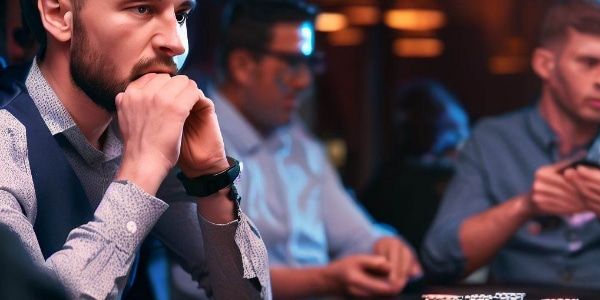Introduction
Picture this: you're seated at a poker table, your heart pounding in your chest as you strive to keep your expression unreadable. Your opponents are scrutinizing your every move, trying to decipher the strength of your hand from your demeanor. Welcome to the high-stakes world of poker, where mastering the art of bluffing and reading tells can be the difference between winning big or going home empty-handed.

Whether you're a seasoned poker player or a novice just starting out, understanding how to effectively bluff and read your opponents' tells is crucial. It's not just about the cards you're dealt, but also about how you play them - and more importantly, how you convince others to play theirs.
The term 'poker face' refers to the ability to mask your emotions and intentions, keeping your opponents guessing about your next move. It's an essential skill in poker, where a single tell or a momentary lapse in control can give away your strategy. But how do you maintain a poker face? And how can you use it to your advantage?

In this blog post, we will delve into the fascinating world of poker bluffing and tells. We'll explore why bluffing is a critical part of the game, how to bluff effectively, and how to interpret your opponents' tells. We'll also discuss the importance of maintaining a poker face and provide practical tips on how to perfect it.
So, if you're ready to up your poker game and become a formidable force at the table, read on. Let's dive into the intricate dance of deception and detection that is poker.
What is the Psychology of Bluffing?
Bluffing, a fundamental aspect of poker, is a psychological strategy that can significantly influence the outcome of the game. It's not just about having a good hand; it's about projecting confidence, making quick decisions, and controlling your emotions in the heat of the moment. The purpose of bluffing is to win the pot even when you have no or just a mediocre hand - which is very often the case!

The psychology behind bluffing is as important as the actual mechanics of the game. The best bluffers understand that it's not just about having a good hand – it's about being able to project confidence, make quick decisions, and control your emotions in the heat of the moment. This ability to project nothing and focus on the present moment is a powerful tactic when bluffing in poker. It forces you to concentrate on the game, eliminating worries about whether your bluff will succeed.
In the game of poker, employing a bluffing strategy carries its own set of risks, but when executed correctly, it can yield rewarding results. Novice poker players frequently harbor the misconception that frequent bluffing is the key to success, however, it's more beneficial to be discerning about the instances in which you choose to bluff. To enhance your bluffing skills, it's advisable to practice this technique during low-stake games, as this provides an opportunity to master the art of persuading opponents that you possess a strong hand. In poker, it's important to bluff sometimes or else the game can be boring and you won't win any money. Your opponents will know if you never bluff and take advantage of it. The reason is that more often than not both players have a weak hand, and then the one who bluffs wins the pot.
The effectiveness of bluffing varies depending on the player's experience and their nature. For instance, a careful and scared player might fold a lot as pots get bigger, making them an easy target for bluffing. On the other hand, an aggressive and overconfident player might call just about anything you throw at them, making bluffing against them a bad idea early in the game.
Physical tells like trembling hands, labored respiration, and forceful swallowing can often indicate a bluff. However, these signs could also be manifestations of excitement or anxiety, especially if the player is unaccustomed to live games or holds a strong hand and anticipates your call. Consequently, accurately interpreting these physical tells can provide you with a strategic advantage in the game.
In conclusion, bluffing is a complex psychological strategy that involves understanding your opponents' behaviors and manipulating their perceptions. It's a necessary part of the game that adds an extra layer of excitement and challenge. So, next time you sit down for a game of poker, remember to consider the psychology of bluffing and use it to your advantage.
Fundamental Skills and Techniques
1. Maintaining a Neutral Expression: Keeping Your Face in Check
In the high-stakes world of poker, mastering the art of maintaining a neutral expression, often referred to as a "poker face," is an essential skill. A poker face is a blank, emotionless expression that conceals your thoughts and feelings from your opponents. It's characterized by straight-lined mouths, unfocused eyes, and slack cheeks. While some may perceive it as negative, others see it as a reflection of calmness and control.

The importance of a neutral expression in poker cannot be overstated. It's a tool that helps you refrain from revealing any wavering emotions through physical expressions. Your opponents may be waiting for you to inadvertently reveal information about your hand through your facial expressions or body language. By keeping a poker face, you prevent giving away any clues about your hand, thus maintaining an advantage over your opponents.
Maintaining a neutral expression isn't just about suppressing your feelings or being dishonest. It's about practicing emotional control and presenting a calm demeanor, even under pressure. This skill extends beyond the poker table and can be beneficial in various life situations, such as during negotiations or challenging dilemmas, where maintaining control over the situation is crucial.
So, how do you maintain a neutral expression while playing poker? Here are some tips:
A. Relax your face: Clear your mind, wiggle your face to loosen the muscles, take a deep breath, and relax. Any type of expression can give away your power in situations with your opponents.
B. Control your body language: Poker is as much about psychology as it is about skill and luck. Observing 'tells' - reading your opponent's body language to decipher subconscious shrugs, sighs, and signals that give away their hand - can make the difference between winning and folding.
C. Practice mindfulness: Learn to control your emotions. Incorporate techniques like deep breathing, mindfulness, and meditation into your training regime. Practice these techniques often enough that they become automatic.
D. Limit interaction with your opponents: If you're not comfortable talking, don't engage with your opponents who try to elicit your feelings during critical times. Simply ignore them, remain silent, and avoid looking at other players who are conversing.
E. Practice dissociation: Poker can be an emotional rollercoaster. Big swings are a common feature of the game. Going from the thrill of victory to the dreadful frustration of losing is something that everybody handles differently. If you can dissociate yourself, you can get rid of emotional elements from the game.
In her book "Poker Face: Mastering Body Language to Bluff, Read Tells and Win", Judi James, a leading expert in body language and social behavior, explains how to disguise your hand and unmask bluffers. She identifies four main poker "personalities" and reveals the key physical tells that expose bluffing and winning or losing hands. However, it's worth noting that some readers have criticized the book for its lack of specific poker-related content, suggesting that it may be more useful for general body language enthusiasts rather than dedicated poker players.
Nonetheless, the importance of maintaining a neutral expression during a poker game cannot be overstated. It's a skill that requires practice and patience, but once mastered, it can significantly enhance your poker strategy and increase your chances of success at the table. So, whether you're a seasoned pro or a novice player, remember to keep your face in check - because in poker, your face can be your greatest asset or your biggest downfall
2. Controlling Your Body Language: The Power of Stillness
Mastering your body language is as crucial as understanding the game's rules. One of the most potent tools in a player's arsenal is the power of stillness. Stillness, in the context of body language, conveys a sense of calm and confidence. It's a silent message that you're in control, unflustered by the unfolding game, and unfazed by your opponents' moves.

The art of maintaining a poker face relies heavily on your ability to suppress any wavering emotion through physical expressions. Your opponents are constantly on the lookout for 'tells' - subconscious shrugs, sighs, or signals that might give away your hand. Therefore, the ability to maintain a composed demeanor, free from any revealing movements, can be a game-changer.
However, achieving this level of stillness requires practice and discipline. As highlighted in the book "How To Talk To Anyone" by Leil Lowndes, even when you don't understand what's happening, your body should respond with congeniality and acceptance. This means that even under pressure, your body language should remain steady and controlled.
A good poker face doesn't always mean complete stillness, but rather the ability to hide what's going on internally. This could involve bluffing your opponents or controlling your reactions to their moves. For instance, gripping your cards tightly can reveal anxiety, so it's essential to keep your hands relaxed and calm.
In conclusion, the power of stillness in poker is not just about physical immobility. It's about exuding an aura of calm and confidence, controlling your facial expressions, and subtly manipulating your body language to keep your opponents guessing. Mastering this art can significantly enhance your poker game, making you a formidable opponent at the table.
3. Interacting with Confidence: Calmly Engaging with Other Players
In the world of poker, confidence is not just a trait; it's a strategy. It's a tool that can be wielded to influence the game and the players around you. Confidence in poker isn't about bluffing or boasting; it's about trusting your decision-making abilities and maintaining composure, even when the stakes are high.

Confidence in poker is crucial for several reasons. Firstly, it allows you to seize opportunities for bluffing when they arise. Secondly, it enables you to make 'hero calls' that require trusting your gut and intuition. Lastly, it helps you interact effectively with other players, which is an essential aspect of the game.
Interacting with confidence in poker is about more than just playing the game; it's about managing your emotions and maintaining a calm demeanor. When you're confident, you're less likely to be affected by stress or pressure, allowing you to stay focused on the present moment. This is particularly important when dealing with aggressive opponents. Uri Peleg, a renowned poker player, suggests playing more passively with strong hands and being more aggressive with draws when dealing with such opponents.
However, maintaining your cool in poker isn't always easy, especially when faced with bad beats or aggressive players. Here are some strategies to help you keep your cool:
A. Take a Break: If you feel yourself tilting, take a break. Don't play when you're tired, stressed, angry, or upset. Remember, the games aren't going anywhere. They will be there again tomorrow.
B. Don't Make it Personal: Don't focus on individual players who have been getting lucky against you. Instead, think of all the players as one big universe. Your battle is with the entire universe of players, not some individual who has been getting lucky against you lately.
C. Understand the Odds: Make sure you understand the basics of hand odds, pot odds, and implied odds. This will help you bet an amount that keeps you on the right side of the math.
D. Laugh it Off: Sometimes, the best thing you can do when the bad poker players are getting lucky is to simply laugh it off. If you got the money in good, you won. Let the cards fall however they will.
E. Practice Mental Imagery: Pick a player whose game you admire and watch him or her play. Imagine yourself playing your hands in the same manner as your poker hero. This technique is known as mental imagery and it works quite well for increasing self-confidence.
Remember, confidence in poker is about more than just winning; it's about learning to trust your decision-making abilities and maintaining your cool, no matter what happens. So, the next time you sit down at the poker table, remember to interact with confidence and calmly engage with other players.
4. Reading Opponents' Tells: Understanding Non-Verbal Cues
In the world of poker, the ability to read your opponents is as crucial as understanding the cards in your hand. This skill goes beyond merely observing the bets they place or the strategies they employ. It delves into the realm of non-verbal communication, where subtle cues and unconscious behaviors can reveal a wealth of information about a player's hand and their next move.
Non-verbal cues, often referred to as 'tells' in poker parlance, are involuntary physical indicators that provide insights into an opponent's potential hand. These tells can range from eye movements and facial expressions to the way a player handles their chips or cards. For instance, forceful chip movements might indicate a weak hand, while constant card rechecks could suggest a draw.
Understanding these tells can significantly enhance your poker game, turning it into a psychological battlefield where you can decipher your opponents' strategies and anticipate their moves. However, it's important to remember that tells can vary greatly from person to person. Therefore, keen observation and pattern recognition are key to accurately interpreting these signals.
One common tell is the level of eye contact a player maintains. Players with strong hands often appear more relaxed and are more likely to make direct eye contact. Conversely, those with weak hands or bluffing may avoid eye contact, indicating their discomfort with the situation.

Another tell lies in a player's attentiveness. In today's digital age, distractions like smartphones can be a revealing indicator of a player's interest in the hand. Players engrossed in their devices often have weaker hands, as they find their screens more interesting than their cards.
Table talk, or the conversation a player engages in during the game, can also serve as a tell. A player who suddenly becomes talkative might be trying to project an image of relaxation, suggesting a strong hand. On the other hand, players making disclaimers or statements contradicting their actual hand strength might be attempting to appear weak when they are, in fact, holding a strong hand.
However, it's essential to note that experienced players might use these tells to their advantage, employing 'false tells' to mislead their opponents. Therefore, while understanding non-verbal cues can be a powerful tool in poker, it should be used in conjunction with other strategies and observations for the best results.
In conclusion, the art of reading opponents in poker extends far beyond the cards on the table. By understanding and interpreting non-verbal cues, players can gain a significant edge in the game, turning every round into a thrilling exercise in psychology and strategy. So, the next time you sit down at a poker table, remember to keep an eye out for these tells - they might just be the key to calling your opponent's bluff and winning the game.
5. Bluffing Techniques: Convincingly Faking Your Hand
Bluffing is an integral part of poker, a strategic move that can turn the tables in your favor even when you're holding a weak hand. It's a skill that requires practice, understanding of the game, and a keen sense of observation. Here are some techniques to convincingly fake your hand and bluff effectively.

- Stealing the Blinds More Often: Contrary to popular belief, you don't need a strong hand to steal the blinds. The key is to identify tight and weak players in the blinds and raise instead of folding when you have a hand like 9♥6♥ or Q♠7♠. This simple bluff often wins you an easy pot.
- Double Barrel Scare Cards: This technique involves continuing to bet on the turn on all scare cards, especially at lower stakes. For instance, if the flop comes 8♦5♠2♥ and the turn comes A♣, always bet on this ace regardless of what you have. Your opponent will often fold out of fear of the ace.
- Bluff Raise the Turn: When someone double barrels you (bets the flop and turn), raise them back. This forces them to have a really strong hand, which is hard to achieve in Texas Hold'em, making this play highly effective.
- Bluff Your Missed Draws on the River: If you have a missed draw on the river, it's a perfect time to bluff. However, ensure you're doing this against weak and fearful players who are likely to fold and that you're telling a believable story with your bluff.
- Hollywood Shove Your Monster Hands on the River: This isn't exactly a bluff but is disguised as one. If you have a huge hand on the river such as a set, straight, flush, or full house, pretend to think before shoving all in. This makes your opponents think you're considering a bluff, increasing the chances they'll call you down.
Remember, bluffing is not just about faking a strong hand; it's also about reading your opponents and choosing the right moment to bluff. Practice these techniques, observe your opponents, and soon you'll be bluffing like a pro. Bluffing in poker is an art form, a delicate dance of deception and strategy that can make or break your game. It's not just about having a good poker face; it's about understanding the psychology of your opponents, knowing when to bluff, and how to convincingly fake your hand. .
Sometimes, a player may fake a tell, hoping to induce their opponents to make poor judgments in response to the false tell. Common poker tells include covering hole cards with a chip only when strong before it is their turn to act, acting impatiently, suddenly appearing fearless, even in pressure situations, bet sizing changes, and changes in breathing patterns or physical actions.
The psychology behind bluffing is just as important as the actual mechanics of the game. The best bluffers know that it's not just about having a good hand – it's about being able to project confidence, make quick decisions, and control your emotions in the heat of the moment. Bluffing is a necessary part of the game. Without it, you must have a strong hand to win the pot—the strongest hand, in fact. But it isn't easy to make a hand in No Limit Hold'em. Most hands miss the flop, and a very strong hand preflop can become very weak by the river. Consequently, bluffing becomes a crucial strategy.
In conclusion, bluffing in poker is a risky strategy that can pay off in a satisfying way. Remember, bluffing is not just about faking a strong hand; it's about understanding your opponents, controlling your emotions, and making strategic decisions at the right time.
Advanced Topics
Honing Your Skills: The Power of Practice in Reading Poker Opponents
Poker is a game that demands not just luck, but also skill, strategy, and a keen understanding of human behavior. One of the most crucial skills in poker is the ability to read your opponents, deciphering their tells and predicting their moves. This ability, however, is not innate; it requires practice and experience.
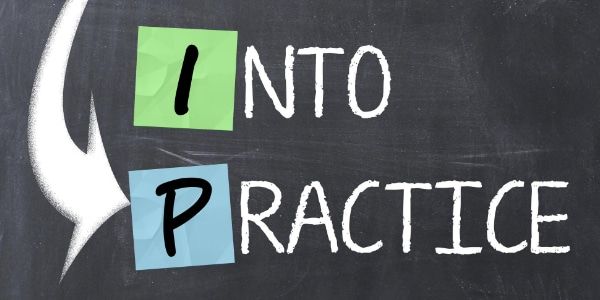
Playing poker with friends or online can provide an excellent platform for honing this skill. Online poker, in particular, offers a unique advantage. On average, online players engage in around 100 hands per hour, compared to the 30 hands per hour typical in live poker. This increased frequency of play accelerates the learning process, allowing players to quickly improve their understanding of the game and their ability to read opponents.
However, it's important to remember that reading tells should not be seen as a substitute for a solid poker strategy. While tells can provide valuable insights, a strong strategy remains the key to winning in the long run. Therefore, while practicing, focus on improving both your ability to read opponents and your overall game strategy (Not Just a Game: The Cognitive Benefits of Poker, 2020).
When practicing, pay close attention to common poker tells such as eye contact, speed of action, handling of chips and cards, level of attentiveness, and table talk. These behaviors can often reveal valuable information about an opponent's hand (Common Poker Tells: How to Read People in Poker, 2019).
Remember, the more you practice, the better you'll become at reading your opponents. So, whether you're playing a friendly game with friends or engaging in online poker, use every opportunity to sharpen your skills and deepen your understanding of this complex and fascinating game.
Sharpening Your Bluffing Skills: Essential Books and Online Resources
In the world of poker, mastering the art of reading tells and bluffing is a game-changer. To help you elevate your bluffing skills, here are some highly recommended books and online resources that delve into these crucial aspects of the game.

Starting with books, "Caro's Book of Poker Tells" by Mike Caro and "Reading Poker Tells" by Zachary Elwood are two must-reads. Both books offer comprehensive insights into understanding and interpreting 'tells' - the subconscious signals players give off during a game. Another valuable book is "What Every Body Is Saying," which provides an in-depth exploration of body language in poker.
The article titled "Body Language: 7 Poker Tells You Need to Know" on 888poker's website is another excellent resource. It provides a detailed analysis of physical tells and how to interpret them in the context of a player's default behavior. These articles and books not only enhance your understanding of poker strategy but also provide practical tips to improve your gameplay.
Patience is Key: The Journey to Mastering the Poker Face
In the world of poker, the art of bluffing and reading tells is a skill that requires time and patience. It's important to remember that mastering the poker face doesn't happen overnight. It's a journey, not a destination.
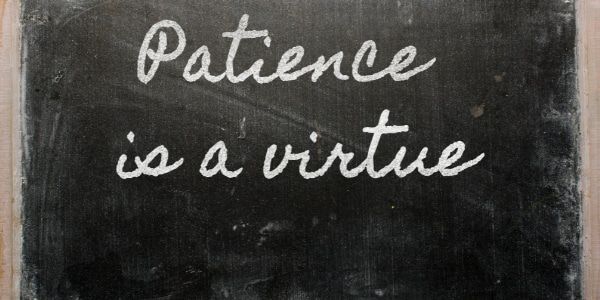
The poker face, a core concept of poker, has been widely adopted by mainstream culture. From newscasters to pop stars like Lady Gaga, the image of a stone-faced individual making a significant bet has been romanticized in countless movies and TV shows. However, it's crucial to understand that the power of a poker face stems not from the face itself, but from the ability to maintain an expressionless demeanor, creating uncertainty in your opponents' minds.
Phil Ivey, renowned for his intimidating poker face, serves as a prime example. His deadpan expression, devoid of any discernible emotion, has undoubtedly contributed to his success at the poker table. But remember, even Phil Ivey wasn't born with this skill. It took him years of practice and countless games to perfect his poker face.
Developing a poker face isn't about mimicking the stone-cold gaze of a professional player. It's about finding a neutral look that works for you and consistently maintaining it, whether you're running a huge bluff or holding a royal flush. This consistency is key to avoiding 'tells' - changes in behavior or demeanor that might reveal the strength of your hand.
It's also worth noting that poker tells go beyond facial expressions. Experienced players often consider verbal cues, hand movements, and overall body language. Therefore, while working on your poker face, don't neglect these other aspects of the game.
Finally, don't be disheartened if you don't see immediate results. Remember, even the most seasoned players were once beginners. Keep practicing, stay patient, and over time, you'll find yourself becoming more adept at bluffing and reading tells, gradually mastering the art of the poker face.
What are the Biggest Tells in Poker?
One of the most prominent tells in poker is quick calling. Quick calling is when a player makes a call within a few seconds after the bet was made. This rapid response often indicates that the player's hand is relatively weak. The reason behind this is simple: a player with a strong hand would typically take more time to consider their options and strategize their next move. On the other hand, a player with a weak hand might make a quick call in an attempt to appear confident and uninterested in considering other options.
According to Liv Boeree, a renowned poker champion, the most reliable tell isn't in the face at all, but rather in the body - specifically, the feet. While players may maintain an impassive expression, their feet often betray their true feelings. If their feet are bouncing around, it's usually a sign that they have a strong hand. Conversely, if their feet suddenly tuck themselves around the table or chair legs, something might be amiss.
However, it's important to note that not all players exhibit this tell, and some experienced players may even use it as a bluff to mislead their opponents. Therefore, while quick calling is a common tell, it should not be the sole basis for your decisions at the poker table.
Other common tells include forceful chip movements, which usually indicate weakness, and strong eye contact, which often signifies a weak hand. Additionally, sudden improvements in posture, constant card rechecks, and longer card apex are also considered reliable tells.
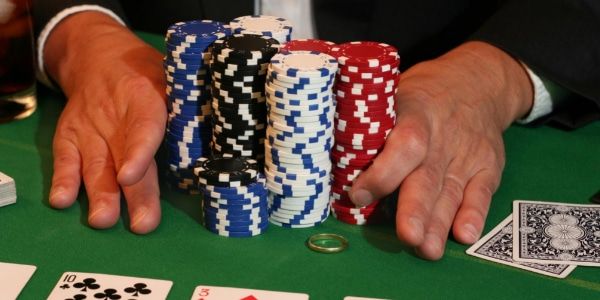
Interestingly, some players have been known to give fake tells to confuse their opponents. This is a strategy often employed by professional poker players to gain an upper hand in the game. Therefore, while tells can be helpful, they should always be interpreted in conjunction with other factors such as the player's overall behavior, betting patterns, and previous plays.
In conclusion, while the biggest tell in poker is often considered to be quick calling, it's essential to remember that poker is a game of strategy and deception. Therefore, always consider multiple factors before making your move and remember that not all tells are foolproof.
How to tell if someone is bluffing online
Detecting a bluff in an online setting can be quite challenging due to the absence of physical tells. Here's how you can tell if someone is bluffing in online poker.
Firstly, pay attention to the opponent's betting patterns. If they suddenly change their usual betting style, it could be a sign of bluffing. For instance, if they typically bet conservatively but suddenly start making high-risk bets, they might be bluffing.
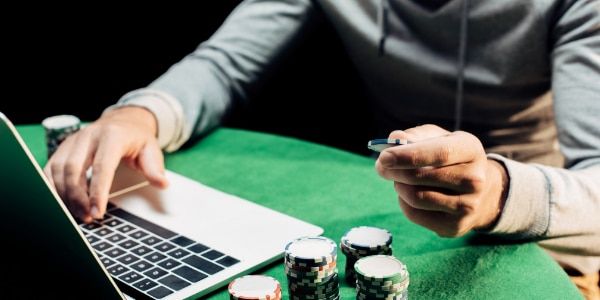
Another factor to consider is the speed at which your opponent bets. Some players tend to bet quickly when they have a strong hand due to excitement. However, this isn't always the case, and some players may automatically bet fast regardless of their hand strength. Therefore, it's crucial to observe your opponent's behavior over time before making any assumptions.
The type of board also plays a significant role in determining whether someone is bluffing. Dry boards with fewer draws are often the best for bluffing. On the other hand, wet or draw-heavy boards are less likely to be bluffed on as there are many potential hands that could hit on the turn and river.
Bet sizing is another important aspect to consider. If an opponent usually bets around two-thirds of the pot for value and suddenly goes for a full pot bet, especially when most obvious draws have missed, they are likely bluffing.
The frequency of betting can also indicate if a player is bluffing. Players who play too many hands and bet more than 75% post-flop are likely to bluff often. They may even bluff with weaker draws or represent the nuts without having it.
Lastly, consider the stack size. If you're playing against a short stack, opponents won't be bluffing with check-raises over your bets. However, if you're playing deep and the pot is still small, opponents might be more likely to bluff.
Remember, no information or stats are bulletproof in poker. It's all about observing patterns, understanding the game, and making educated guesses. So, keep these tips in mind the next time you suspect someone is bluffing in online poker.
Conclusion
Mastering the art of bluffing and reading tells in poker is a multifaceted skill that requires a keen understanding of psychology, strategy, and intuition. It's not just about keeping a straight face or making bold bets; it's about understanding your opponents, assessing their strengths and weaknesses, and using this information to your advantage.

Bluffing is an art form in itself, where you make your opponent believe you have a better hand than you actually do. This involves a careful balance of confidence and subtlety, as well as a deep understanding of the game's dynamics. It's not just about making big, risky bets; it's about knowing when to bluff, how much to bet, and how to convincingly sell your bluff.
Reading tells, on the other hand, is all about observation and interpretation. It involves closely watching your opponents' body language, facial expressions, and betting patterns to gain insights into their hand and their strategy. Remember, even the most experienced players can give away subtle 'tells' that reveal their hand.
But remember, these skills don't develop overnight. They require practice, patience, and a willingness to learn from your mistakes. So, don't be discouraged if you don't master them right away. Keep practicing, keep learning, and over time, you'll see your poker game improve significantly.
So, next time you sit down at a poker table, remember these strategies. Keep your poker face strong, observe your opponents closely, and use your bluffing skills wisely. With practice and dedication, you'll become a master at bluffing and reading tells, giving you a significant edge over your opponents. And who knows? You might just find yourself winning more games than you ever thought possible.
